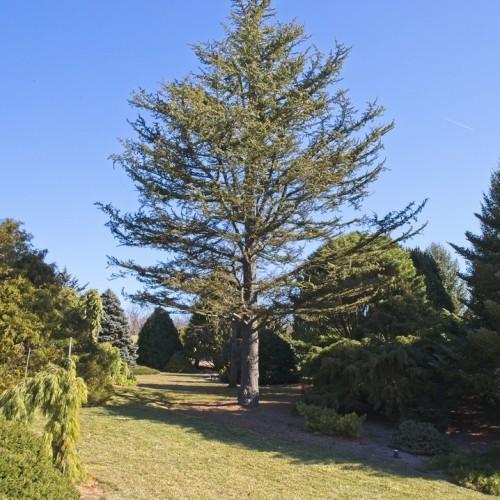
cedar of Lebanon
Cedrus libanitica subsp. stenocoma
Cycle:
Perennial
Watering:
Average
Hardiness Zone:
6
Flowers:
Flowers In Summer
Sun:
Full sun
Soil:
Rocky , gravelly , dry
Cones:
Yes
Leaf:
Yes
Growth Rate:
Low
Maintenance:
Moderate
Drought Tolerant:
Yes
Salt Tolerant:
Yes
Thorny:
Yes
watering
Cedar of Lebanon is a long-living evergreen tree that is native to western Asia and Syria, and is extensively planted throughout the world as an ornamental or timber tree. It requires regular watering and should only be watered when the top several inches of its soil are dry. During the spring and early summer, 1 should water the Cedar of Lebanon 1-2 times a week, depending on the tree species and region’s weather. This will help ensure good growth and enough moisture for the plant. Make sure that the soil is moist, but not overly wet, for sufficient root growth. During the summer, the Cedar of Lebanon should be watered about every 4-6 days, or when the top few inches of soil are dry. Make sure to water in the morning and apply enough water to soak the soil. During the fall and winter, the Cedar of Lebanon should be watered less frequently. Once or twice per month should be enough. Water enough to make the soil moist throughout most of its root system. Overall the Cedar of Lebanon should be kept moist, but not overly soaked. Depending on the weather, watering it once a week during spring and summer and once or twice per month during fall and winter should be sufficient.
sunlight
Cedar of Lebanon (Cedrus libanitica subsp. stenocoma) requires full sunlight to grow and thrive. The species prefers a minimum of 6 to 8 hours of sunlight per day. However, it can tolerate partial shade for up to 4 hours a day. It also requires protection from extreme midday temperatures, so it is best to position plants in a location that receives morning or afternoon light, but not both simultaneously. Additionally, when grown in hot, dry climates, Cedar of Lebanon should be protected from strong afternoon sun.
pruning
The best time to prune Cedar of Lebanon is late winter or early spring, before new growth appears. This gives the tree time to heal before the growing season begins. It is important to use clean and sharp pruning tools when pruning a Cedar of Lebanon. It is best to only prune Cedar of Lebanon lightly. Pruning too heavily or removing more than 15-20 percent of the tree’s foliage will make it vulnerable to disease. Avoid removing entire branches and instead focus on thinning out the interior of the tree to increase air circulation. Remove any broken, dead, or diseased branches as soon as possible. To maintain its shape, Cedar of Lebanon should be lightly pruned once a year. Cedar of Lebanon respond well to pruning, so it is best to prune between 1 and 2-thirds of the new growth on the tree each year. This will prevent the tree from becoming too large for its space and keep its shape maintained. It is also important to remove any weak, dead, or diseased branches or shoots on a Cedar of Lebanon tree. Prune these in late winter or early spring to improve the tree’s overall health. With proper pruning, Cedar of Lebanon can be a beautiful addition to any landscape. Pruning at the right time and in the right way will ensure the tree is healthy and attractive for years to come.
